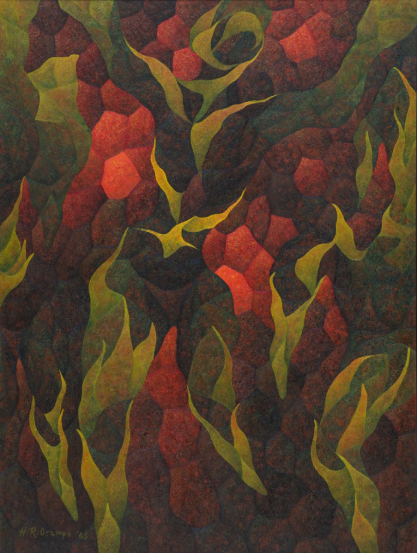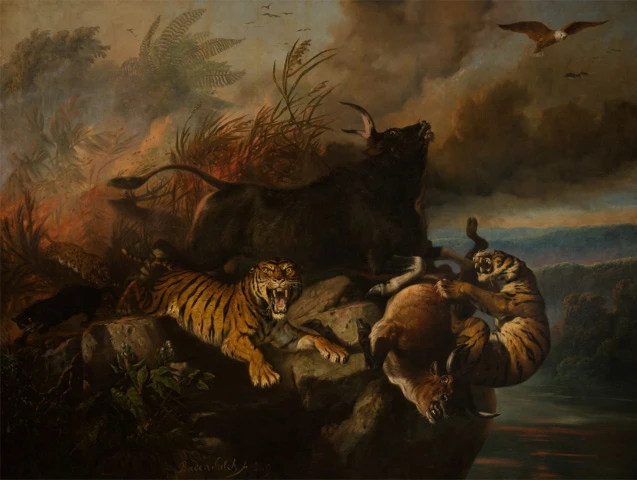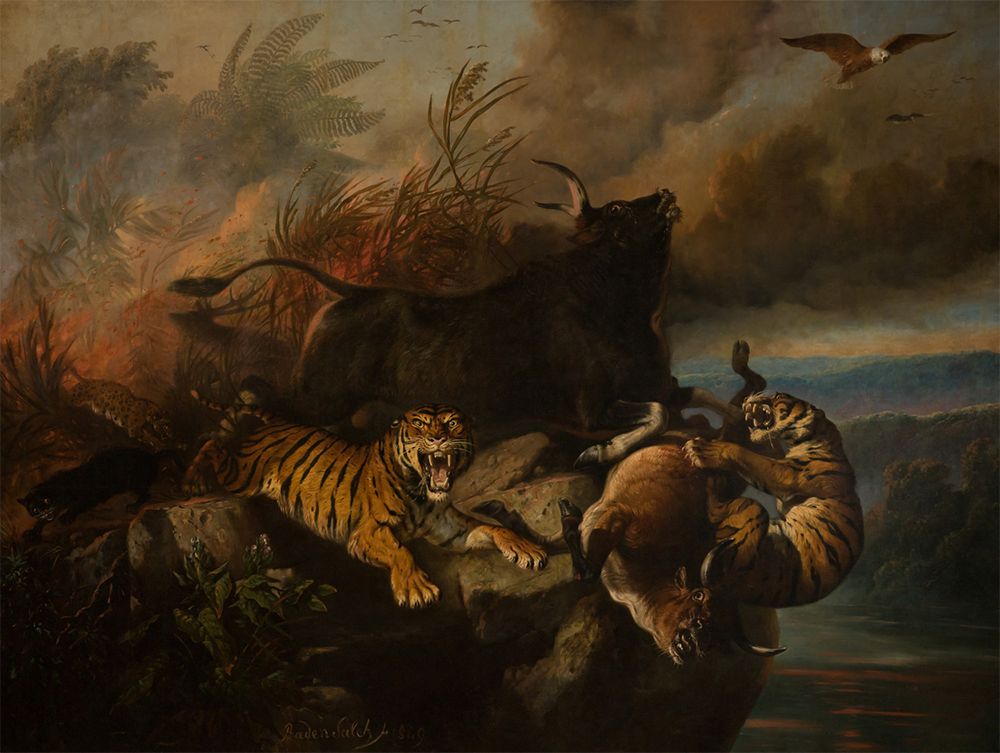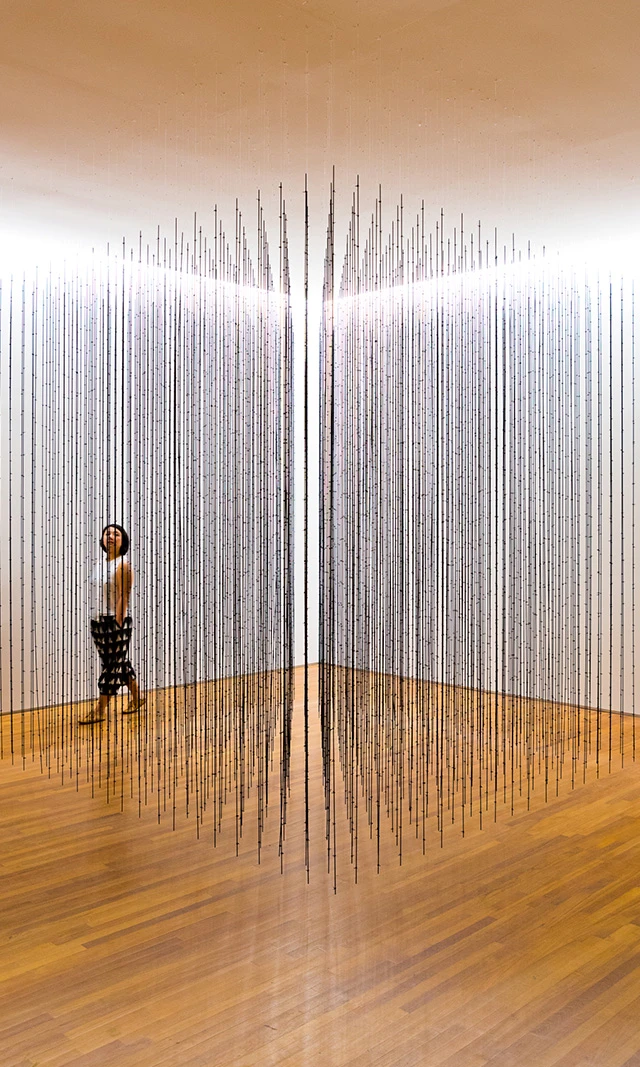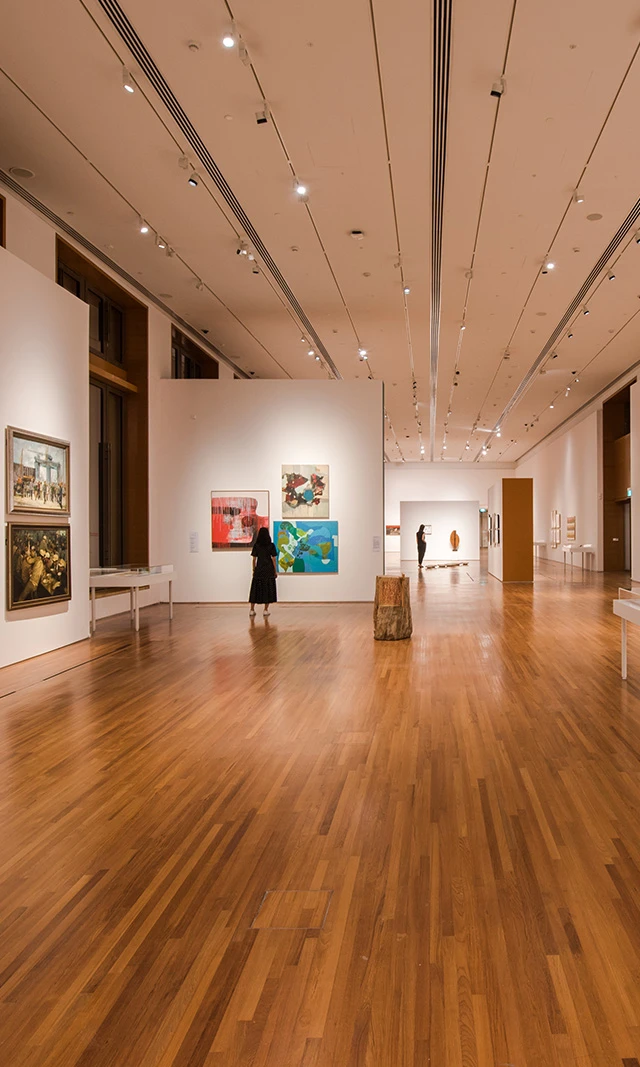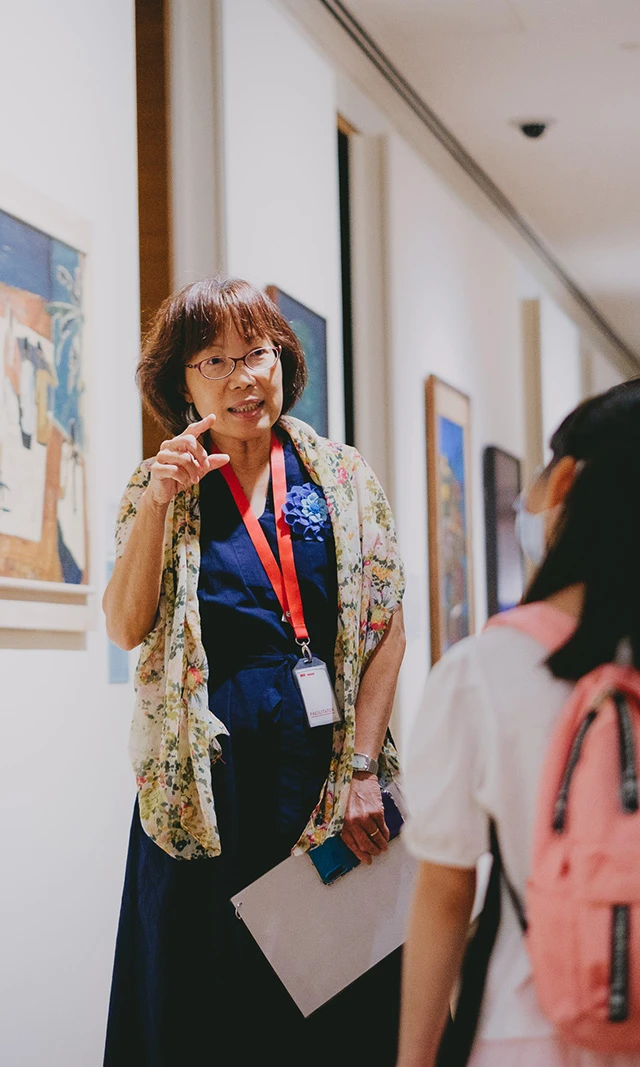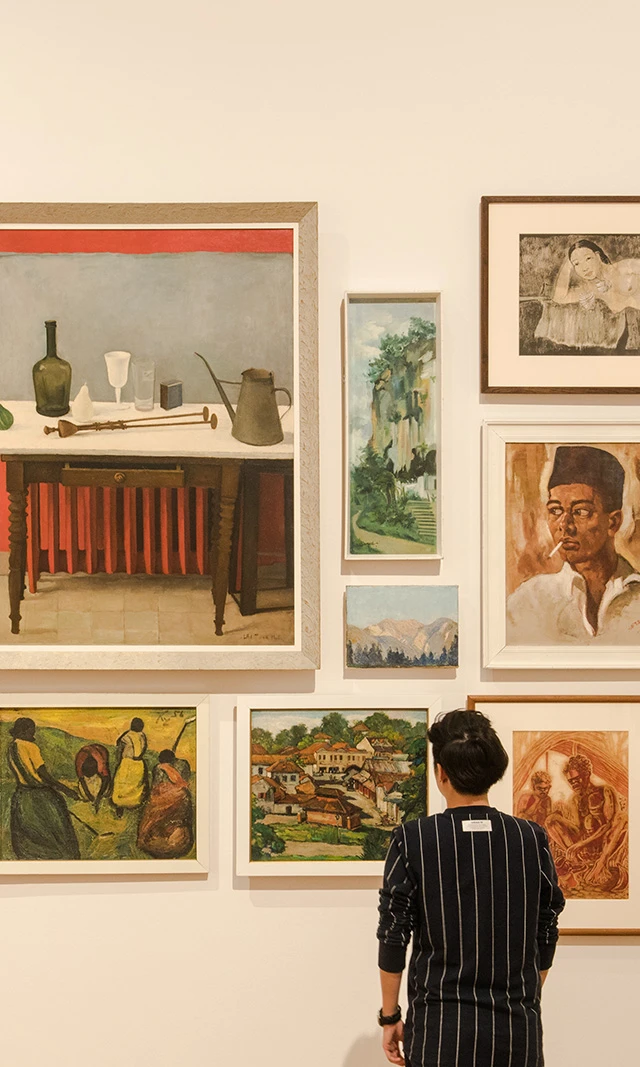Discover the beauty of order in abstraction with National Gallery Singapore’s landmark exhibition Fernando Zóbel: Order is Essential, featuring the transcontinental and cosmopolitan artist
Singapore’s first-ever solo exhibition dedicated to Fernando Zóbel unveils fresh narratives about the cosmopolitan artist, patron, collector, and scholar who bridged cultural contexts and shaped modernist movements worldwide.
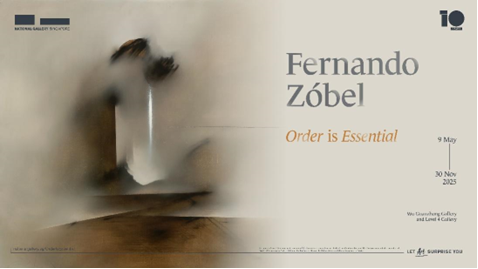
SINGAPORE, 6 May 2025 – National Gallery Singapore presents Fernando Zóbel: Order is Essential, the museum’s first-ever solo exhibition dedicated to transcontinental abstract artist Fernando Zóbel (1924–1984) and Singapore’s inaugural showcase of his work. Opening on 9 May, the exhibition features over 200 pieces — including paintings, drawings, prints, photographs, and archival materials. It introduces Zóbel to new audiences, offering fresh insights into his multifaceted contributions as an artist, patron, collector, and scholar, and foregrounds his role in bridging cultural contexts and enriching global dialogues on modern art.
Zóbel was an avid traveller, a cosmopolitan thinker and writer, and a pioneering collector who formed two modern art museums in the Philippines and Spain — Ateneo Art Gallery in Manila and Museo de Arte Abstracto Español in Cuenca. Born in the Philippines to a prominent Spanish family, his lifelong, extensive interest in the world shaped his expressionist and abstract works in drawing, printmaking, painting, and photography. Zóbel’s artistic practice and inspiration spanned Asia, Europe, and North America, highlighting his global stature as a pivotal figure in modern art. His ability to synthesise diverse cultural impulses and artistic tendencies — from Asian calligraphy to American Abstract Expressionism — created a rich, layered body of work that invites deeper exploration.
The exhibition title Order is Essential is a quote from Zóbel on his artistic philosophy of how beauty and tranquillity emerge from order. This brings to light a surprising dimension of Zóbel’s practice of abstraction, revealing how he had a meticulous and controlled creative process which involved multiple iterations before finalising his works. He is also well known for his signature method of using a syringe to control thin lines of paint — first featured in the artist’s Saeta series — a technique that became his defining contribution to modern art.
Fernando Zóbel: Order is Essential builds on Zóbel: The Future of the Past, which opened at Museo Nacional del Prado (2022) in Spain and was later restaged at the Ayala Museum (2024) in the Philippines. Expanding on key narratives, the Gallery’s distinct and fresh iteration introduces exclusive works and offers a unique perspective on Zóbel’s artistic evolution and transcontinental practice.
Dr Patrick Flores, Chief Curator at National Gallery Singapore, and the Project Director and Co-curator of the exhibition, says, “We are honoured to present the first solo exhibition of Fernando Zóbel in Singapore, offering an expanded and dynamic narrative that situates this remarkable transcontinental artist as both a key figure in global modernism and a vital link across modernist traditions and art worlds. His work resonates with those who are drawn to art that transcends singular cultural boundaries and speaks to a broader human experience.”
Dr Flores added, “By contextualising Zóbel’s practice within Southeast Asian and global art histories, Fernando Zóbel: Order is Essential affirms the Gallery’s commitment to shaping new perspectives of art and deepening cross-cultural dialogue. Our close collaborations with esteemed institutions such as the Museo Nacional del Prado, Fundación Juan March, and the Ayala Museum reflect our dedication to presenting exhibitions that enrich the understanding and appreciation of post-colonial and modern art regionally and beyond.”
Manuel Fontán del Junco, Director of Museums and Exhibitions at the Fundación Juan March and Director of the Museo de Arte Abstracto Español, Cuenca, says, “Working side by side with National Gallery Singapore has been quite an experience: that of seeing Zóbel's work with a gaze that is closer to his origins in Asia than ours. We have completely opened to the Gallery the doors of our collection of works by the artists Zóbel collected and to whom he gave his first institutional support in the Museum of Spanish Abstract Art in Cuenca, which he founded when our country lacked museums. That the Gallery’s curators lucidly asked us from the beginning to include works by these artists would have thrilled Zóbel as much as it has thrilled us.”
Structured around the United States, the Philippines, and Spain, where he practised from the 1940s to the 1980s, this survey invites audiences to reflect on how modernism took different forms in each place and time, and how Zóbel’s practice navigated and bridged these cultural environments. Spanning two gallery spaces and five sections — “Half of this haunted monk’s life”, “With every single refinement”, “Thin lines against a field of colour”, “Movement that includes its own contradiction”, and “The light of the painting” — the exhibition also introduces key international artists Zóbel engaged with and collected throughout his career, such as Mark Rothko, Antoni Tàpies, and Liu Kuo-sung, whose original works will be displayed alongside his own. These dialogues offer a broader view of global art movements, enriching the exploration of artistic conversations through Zóbel’s lens.
Tracing Zóbel’s artistic journey across continents
The exhibition opens with “Half of this haunted monk’s life,” a prologue that traces the arc of Zóbel’s artistic evolution through a poignant pairing of his first and last recorded paintings. Spanning decades, this juxtaposition captures the breadth of his journey — from an early expressionist work inspired by a study of Vincent van Gogh to the final painting he was working on before his passing, which evoked the presence of a bridge over a river in Spain where he lived. Together, these works speak to Zóbel’s lifelong dialogue with the past and the future — a conversation between early influence and sustained introspection that shaped the course of his artistic practice.
“With every single refinement” explores Zóbel’s formative years in New England, United States, where he began his journey as a professional artist. During this time, he immersed himself in studying culture and art history while engaging with the vibrant art circles of Boston and Rhode Island. Influenced by leading abstract expressionist artists such as Mark Rothko and Franz Kline, Zóbel was exposed to a wide range of artistic tendencies — from satire to Bauhaus and photography. His intellectual development and meticulous creative process are showcased through sketches from his personal notebook, made while attending art history classes at Harvard University, as well as in a portrait of his mentor, Jim Pfeufer, who later taught him lithography and engraving at the Rhode Island School of Design. This rich, experimental environment encouraged Zóbel to explore various mediums, refine his technical skills, and lay the foundation for the distinctive artistic approach that would continue to evolve throughout his career.
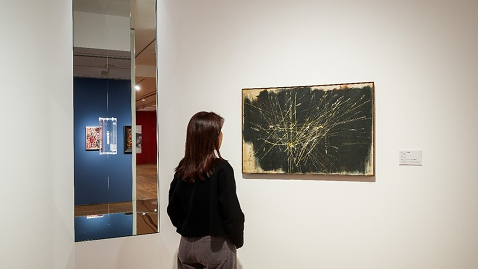
The next section, “Thin lines against a field of colour”, delves into Zóbel’s artistic production in Manila, where he distilled key principles and motifs that reflected the vitality he saw in his birthplace. This quality is reflected in a selection of lithographs and paintings of religious sculptures that served as a significant source of inspiration for his exploration of modern art. While remaining rooted in the Philippines' cultural and material forms, Zóbel began experimenting with cubism and informalism. Also featured in this section are exclusive artworks from his renowned Saeta series, created using his innovative method of applying long, continuous lines of paint with a syringe (without a needle). An actual syringe used by Zóbel is on display alongside the surrounding Saeta paintings, spotlighting the signature technique he employed throughout his career to create his distinctive works. Historical calligraphy and works by Asian artists from his collection are also exhibited, highlighting Zóbel’s multifaceted role as an artist, patron, and collector and his deep engagement with broader artistic practices.
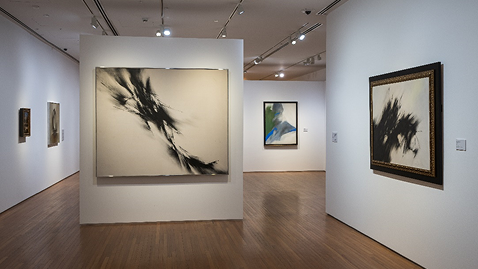
“Movement that includes its own contradiction” revisits Zóbel’s time in Madrid, Spain, where he took up residence in 1961. Central to this section is his Serie Negra (Black Series) created in the spirit of the Art Informel movement. During this period, Zóbel refined his approach to abstraction while gaining broader international recognition. A selection of paintings on display reveals how Zóbel drew on the formal qualities of artworks by European and North American artists he had long studied — from Lorenzo Lotto to John Singer Sargent — and reinterpreted their masterpieces through his own abstract technique. Photographs taken during his time in Europe are also on display, offering insight into how his exploration of photography played a pivotal role in shaping his devotion to abstract painting.
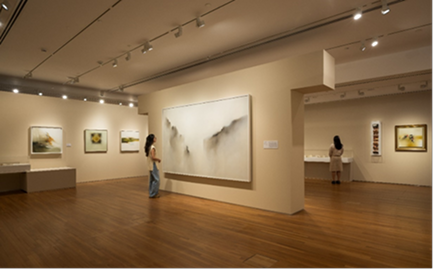
The exhibition's concluding section, “The light of the painting”, presents works from Zóbel's later years in Cuenca, Spain — a historic city whose natural landscape and medieval architecture deeply inspired his mature artistic explorations. This section highlights his increasingly monochromatic investigations, in which he responded sensitively to the surrounding environment: the gorge, the houses nestled in the valley, the plateau, and the banks of the Júcar and Huécar rivers. Zóbel also continued his photographic practice in Cuenca, treating photography as a form of sketching and a memory tool, capturing moments and scenes that could later inform his paintings. On display are photographs of views of Cuenca and works from his football series, in which movement is rendered through a combination of photography, sketches, prints, and paintings. These works range from more figurative representations to highly abstracted impressions, showcasing his fascination with capturing motion and the passage of time.
Fernando Zóbel: Order is Essential at National Gallery Singapore
Fernando Zóbel: Order is Essential runs from 9 May to 30 November 2025 at the Wu Guanzhong Gallery and Level 4 Gallery at National Gallery Singapore and is presented in close collaboration with Fundación Juan March and the Ayala Museum. A General Admission pass is required, and entry is free for Singaporeans and Permanent Residents. For more information, please refer to the attached annexes or visit nationalgallery.sg/Zobel.
Media assets are available through this link.
Annex A: Fernando Zóbel: Order is Essential Sections and Key Artworks
Annex B: Fernando Zóbel: Order is Essential Exhibition Programmes
– END –
Annex A: Fernando Zóbel: Order is Essential Sections and Key Artworks
“Half of this haunted monk’s life”
The exhibition opens with “Half of this haunted monk’s life”, a prologue that introduces visitors to Zóbel’s artistic journey through the juxtaposition of the first and last recorded paintings in his catalogue.
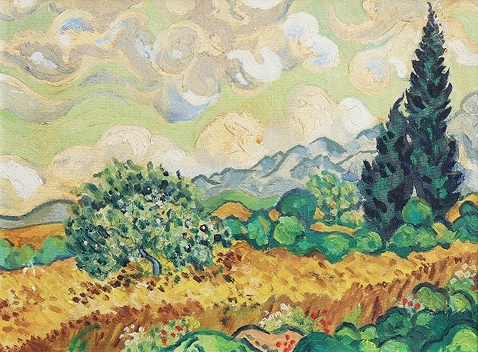
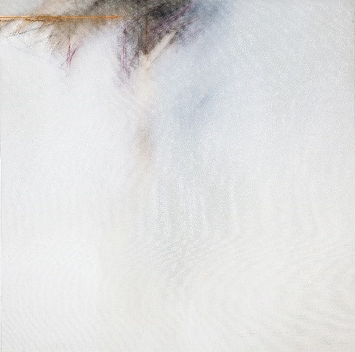
Zóbel’s earliest known painting, Copy of “A Wheatfield with Cypresses” (1889) by Vincent van Gogh (1946), reflects his early fascination with the expressionist style. Drawn to Van Gogh’s vivid palette and dynamic brushstrokes, his version marks an initial exploration of colour, form, and composition — an effort to engage with and learn from the art masters while shaping his own artistic voice. This beginning finds a poignant counterpart in El Puente (The Bridge) (1984), the final painting he worked on before his passing. Depicting the San Pablo Bridge in Cuenca, Spain — a city that became central to his life and artistic legacy — the bridge serves as a metaphor for Zóbel’s role in connecting the past and the future.
Presented together, these two paintings — separated by decades — encapsulate the arc of Zóbel’s evolution. From his early engagement with art history to his mature and personal explorations of abstraction, they reflect his dual role as both a precursor, shaping new directions, and a rebel, challenging the boundaries of a vanishing present.
“With every single refinement”
The exhibition's next section delves into Zóbel's formative years in New England, where he took his first steps toward becoming a professional artist. In this northeastern region of the United States, Zóbel immersed himself in the study of culture and art history, first as a student and later as an artist, learning from influential abstract expressionist artists such as Mark Rothko and Franz Kline.
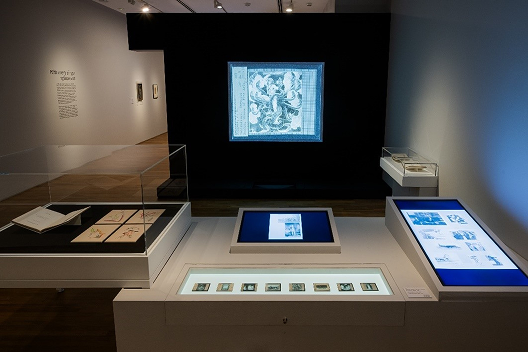
Zóbel’s early exposure to historical and literary figures during his university days profoundly influenced his artistic development. This influence is particularly evident in his Drawings for Federico García Lorca's Amor de don Perlimplín con Belisa en su jardín (1946) [reproduction], where he illustrated Lorca’s farce alongside his thesis on the themes and conflicts within Lorca’s dramatic works. Deepening this exploration of Zóbel’s early intellectual and creative influences, this section includes lantern slides from his art history classes at Harvard University, complemented by a video of scanned pages from his personal notebook. The sketches within these pages — drawn while taking notes during class — depict works of art he encountered in his studies, offering insight into how Zóbel engaged with art history both academically and visually.
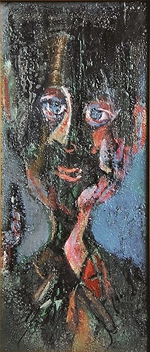
Zóbel’s involvement in the Boston and Rhode Island art scenes furthered his artistic development. During this time, he was informally mentored by American artists Jim Pfeufer and Reed Champion-Pfeufer. Their close friendship is reflected in Zóbel’s Portrait of Jim Pfeufer with Clarinet (1953) and Reed Champion-Pfeufer's work Unicorn (Seated Horse) (1950), which Zóbel later gifted to the Ateneo Art Gallery from his personal collection. This mentorship also played a pivotal role in securing his residency at the Rhode Island School of Design (RISD), where Zóbel expanded his artistic practice. At RISD, he was exposed to a range of artistic techniques, including lithography, engraving, photography, and the avant-garde ideas of Bauhaus and satire. This environment encouraged Zóbel to experiment with various mediums, building technical skills and cultivating the artistic tendencies that would define his evolving style.
“Thin lines against a field of colour”
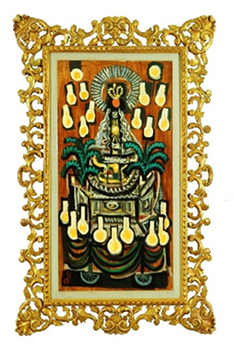
This section explores Zóbel’s return to his birthplace and the artistic production in Manila, where he engaged deeply with the cultural and material forms of the Philippines. Inspired by the vibrant energy of Philippine life, he distilled its essence into his work, reinterpreting local traditions through a modernist lens. Carroza (1953), an abstracted depiction of the religious floats used in Catholic processions, exemplifies this synthesis. The painting won first prize in the modern category of the 1953 semi-annual competition of the Art Association of the Philippines, solidifying Zóbel’s reputation within the Philippine arts scene.
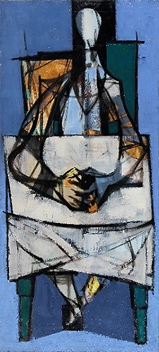
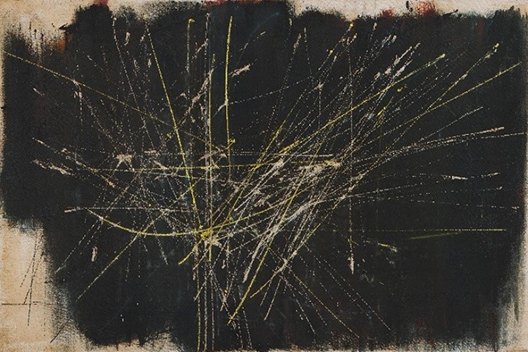
Manila in the 1950s was a hub of modernist experimentation and provided fertile ground for Zóbel’s artistic evolution. Here, he explored cubism, as seen in Seated Man (Nothing III) (1953), and delved into informalism. Striving for greater control in his line work, he devised an innovative technique: using a syringe (without its needle) to apply long, continuous lines of paint across the canvas, then manipulating their effects by brushing some of the marks away. This signature method, emblematic in his Saeta series, became his defining contribution to the repertoire of modernism. While Saeta 44 (1957) from Singapore’s National Collection appears spontaneous with its dynamic white and yellow lines, Zóbel’s process was highly deliberate in being meticulously planned through preparatory studies. This reflected his methodical approach that prioritised discipline and precision over spontaneity.
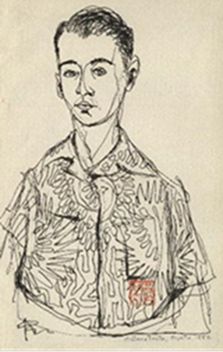

This section also highlights Zóbel’s expansive role as a patron, scholar, and collector. While lecturing on Chinese and Japanese art at Ateneo de Manila University, he immersed himself in these traditions, incorporating their aesthetics into his visual language. His Self-Portrait with Chinese Seal (1952) reflects this engagement, demonstrating his early exploration of calligraphic abstraction. In 1960, his commitment to the arts extended beyond his practice — he donated significant works from his personal collection to the University, founding the Ateneo Art Gallery, the first museum dedicated to modern Philippine art. This section brings together Zóbel’s calligraphic works, including Humming Quietly (undated), displayed alongside historical calligraphy and works by Asian artists from his collection, underscoring how his international perspective not only shaped his artistic practice but also helped advance modern art in the Philippines and fostered its international connections.
“Movement that includes its own contradiction”
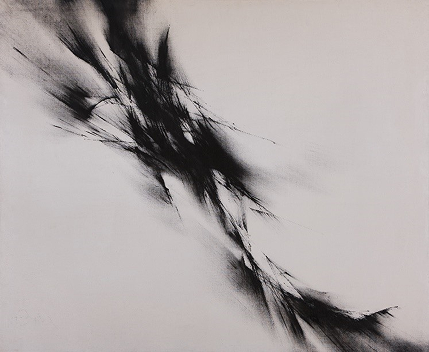
Continuing the journey of Zóbel’s artistic evolution, this section explores his time in Madrid, where he settled in 1961 and refined his abstraction approach. During this period, Zóbel embraced the Art Informel movement, marking a shift toward a more nuanced modulation of tones and grids. La Visión (1961), part of his Serie Negra (Black Series), is a key example of this transformation. It builds upon the foundation laid by his earlier Saeta series and furthers his interest in movement and vibration. Through blurred, streaked paint, and stripped-down compositions, Zóbel isolates the essence of his visual language, using only black and white to remove any distractions. The resulting works focus on the stark contrast of these two colours while simultaneously introducing subtle gradations of tone. This technique, achieved through a dry brush method, adds a layer of dynamism, where the direction of the brushstroke becomes an integral part of the composition’s rhythm. This piece, among others, marked a pivotal moment in Zóbel’s international recognition, with its inclusion in the Spanish Pavilion at the 1962 Venice Biennale, and further showcases at prestigious institutions like the Solomon R. Guggenheim Museum and Tate Gallery.
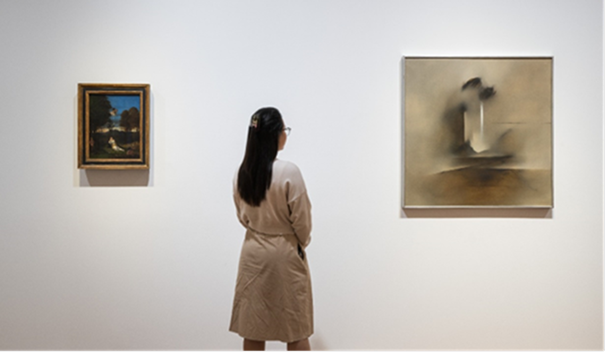
“The light of the painting”
Zóbel’s journey was also one of constant dialogue with art history, as seen in his works like El sueño de la Doncella (ii). Conversación con Lorenzo Lotto (1967) [The Dream of the Damsel (II). Conversation with Lorenzo Lotto], which referenced prominent Renaissance painter Lorenzo Lotto’s Allegory of Chastity (c. 1505). Yet Zóbel did not merely replicate these artists’ techniques. Instead, he reinterpreted their formal qualities through his abstract technique to create his own interpretation. His engagement with these past art masters went beyond homage; it was a deliberate effort to challenge and redefine the very essence of abstraction. Through this, Zóbel charted his artistic evolution and made a lasting contribution to the broader development of modern abstraction, linking art history, international movements, and his distinct creative vision.
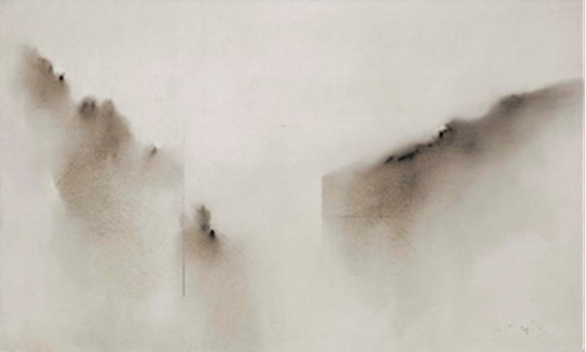
The exhibition's final section focuses on Zóbel's final years in Cuenca, a city outside Madrid that profoundly influenced his artistic vision. Immersed in the natural beauty of its landscape — gorges, rivers, valleys, and medieval fortifications — Zóbel’s work became attuned to his surroundings, capturing their essence with sensitivity and nuance. During this period, he produced two significant series: La Vista (The View) and Serie Blanca (White Series). These works, often monochromatic, pushed Zóbel further into abstraction, blurring the distinction between figure and ground. He transformed the space within his compositions from a mere background into a metaphorical space symbolic of memory and perception. Distilling his vision to its essence, Zóbel invites the viewer to step into his inner world, creating a shared experience where personal and collective perceptions intersect.
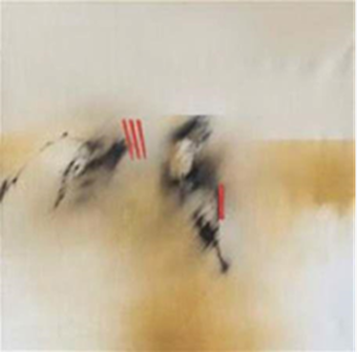
Zóbel’s exploration of movement also extended into photography. He documented young men playing football, capturing fleeting moments of motion. These images later informed paintings like Fútbol 14 (1973), where he transformed the captured energy into fluid, blurred forms. He abstracted movement further by experimenting with composition, medium, and colour, creating more expressive and gestural interpretations. In addition to his work as an artist, Zóbel contributed to the cultural landscape of Cuenca by founding the Museo de Arte Abstracto Español (Museum of Spanish Abstract Art) in 1966, further cementing his legacy as a champion of Spanish postwar abstraction.
Annex B: Fernando Zóbel: Order is Essential Exhibition Programmes
Programme | |
Weekly Tours
English | Thu – Sun | 11am (Starts 23 May) Mandarin | Sat – Sun | 2pm (Starts 24 May)
City Hall Wing, Level 4, Wu Guanzhong Gallery and Level 4 Gallery | Register for free at our Tours & Programmes Counter, located at City Hall Wing, Level 1. |
Curatorial Floor Talk
Saturday, 10 May 2025 4.30pm City Hall Wing, Level 2, Singapore Courtyard
Free Admission with registration | This special programme, held during the exhibition's opening weekend, features a dialogue between curators Clarissa Chikiamco, Patrick Flores, Manuel Fontán del Junco, and Felipe Pereda.
Register via the following link: https://bit.ly/3YqdUzn. |
Reading Groups Saturday, 25 October and Sunday, 26 October 2 - 4pm Wu Guanzhong Gallery and Level 4 Gallery
Free Admission with registration | This reading group invites anyone interested in exploring Fernando Zóbel’s work through close examination and engaging discussion. Participants will engage with selected artworks and archival materials from the exhibition, alongside writings by and about Zóbel, to explore and unpack the complexities of this unique and multifaceted artist.
Please refer to the Gallery’s website for more details. |
Performance
Saturday, 22 November 2025 2.30pm & 4pm Level B1, Padang Atrium
Free Admission | Fernando Zóbel’s Saeta series, characterised by swift, linear strokes and a deep engagement with motion, finds a parallel in the expressiveness of flamenco. This flamenco weaves movement, art, and literature together, much like Zóbel’s artistic career. Experience the connections between dance and visual art, where the dramatic nature of flamenco echoes the depth of Zóbel’s artistic expression. |
Exhibition Catalogue | |
Fernando Zóbel: Order Is Essential
164 pages $55 (inclusive of GST) Available at The Gallery Store by ABRY, City Hall Wing, Level 1 | Fernando Zóbel: Order Is Essential covers the full scope of Zóbel’s oeuvre. The catalogue features six essays offering new insights into Zóbel’s transcontinental practice. The full-colour plates are broken into the exhibition’s four sections, which cover Zóbel’s time in New England, Manila, Madrid and Cuenca, and trace the evolution of Zóbel’s work and influences. |

